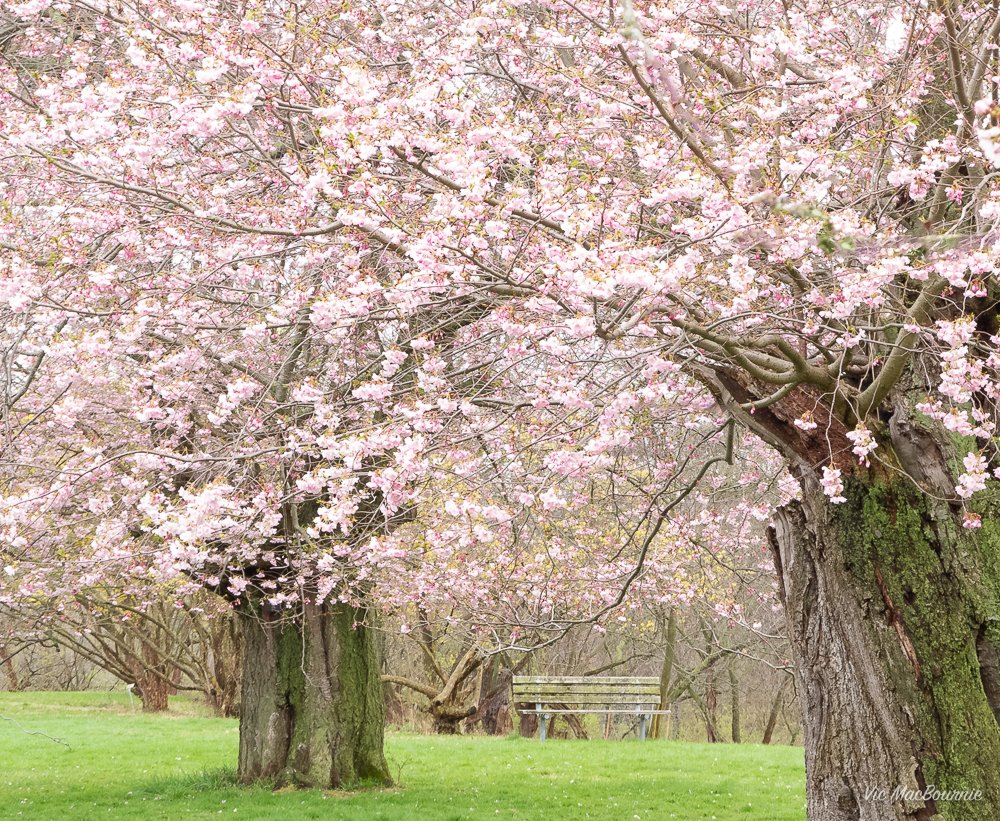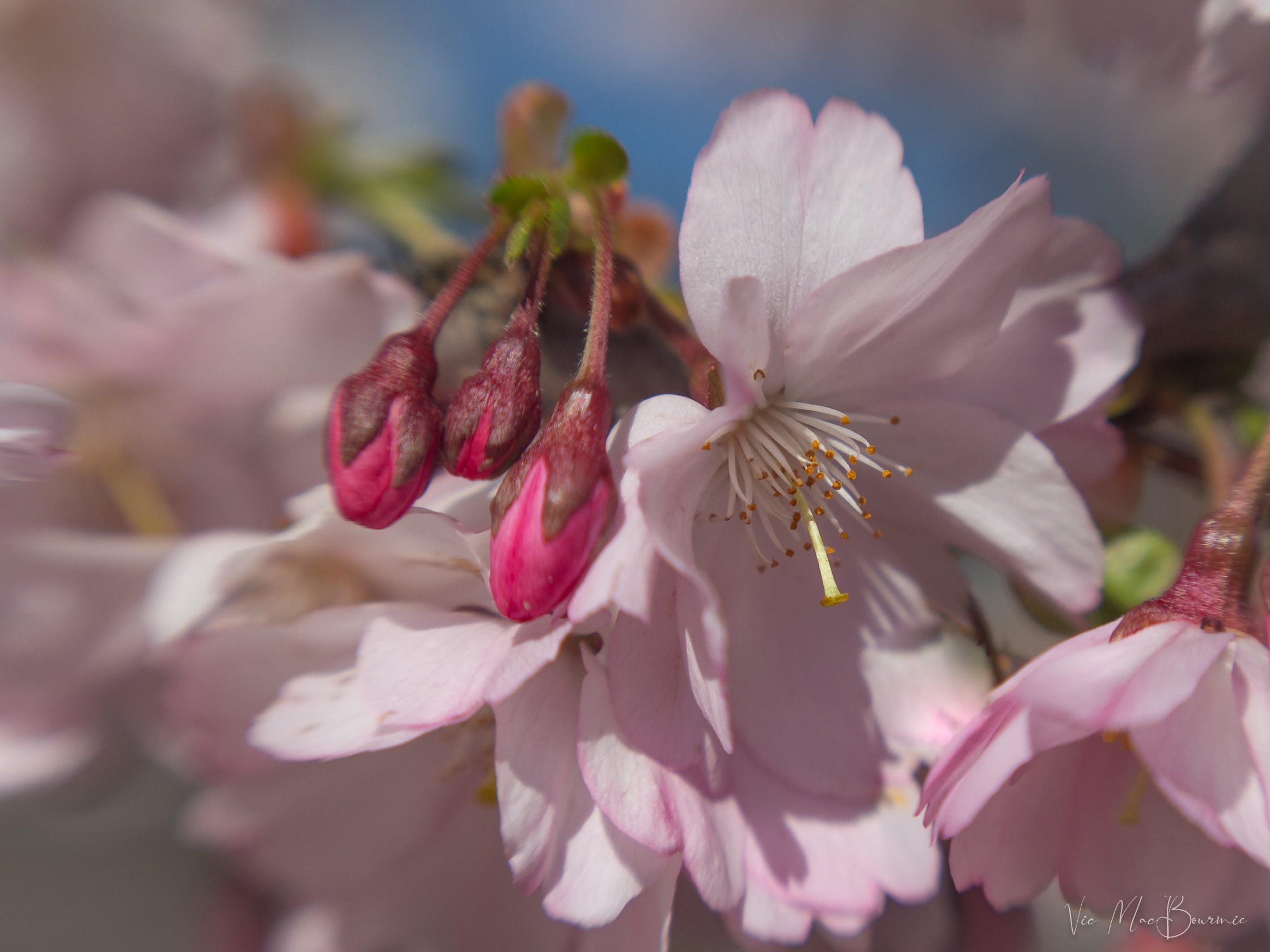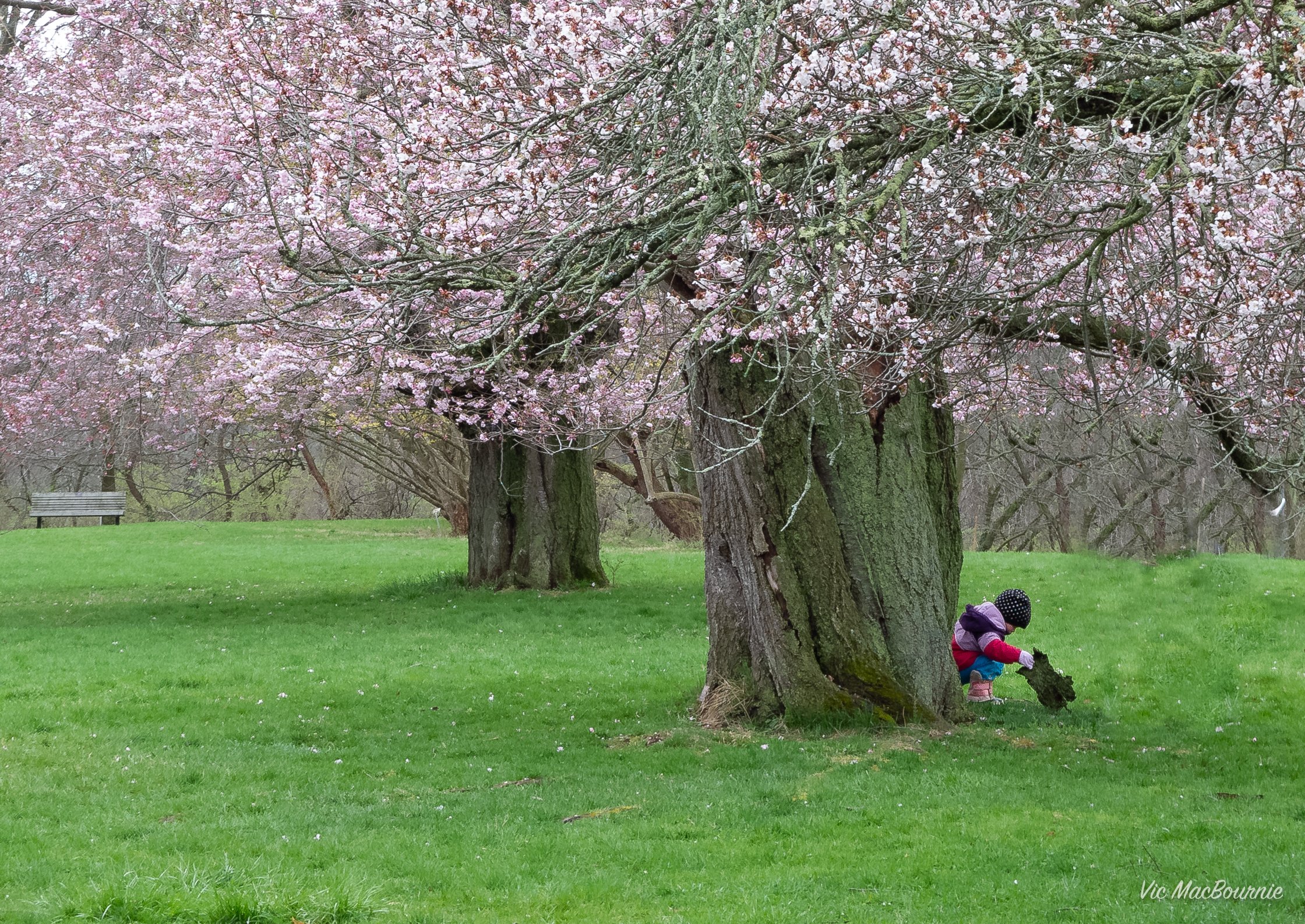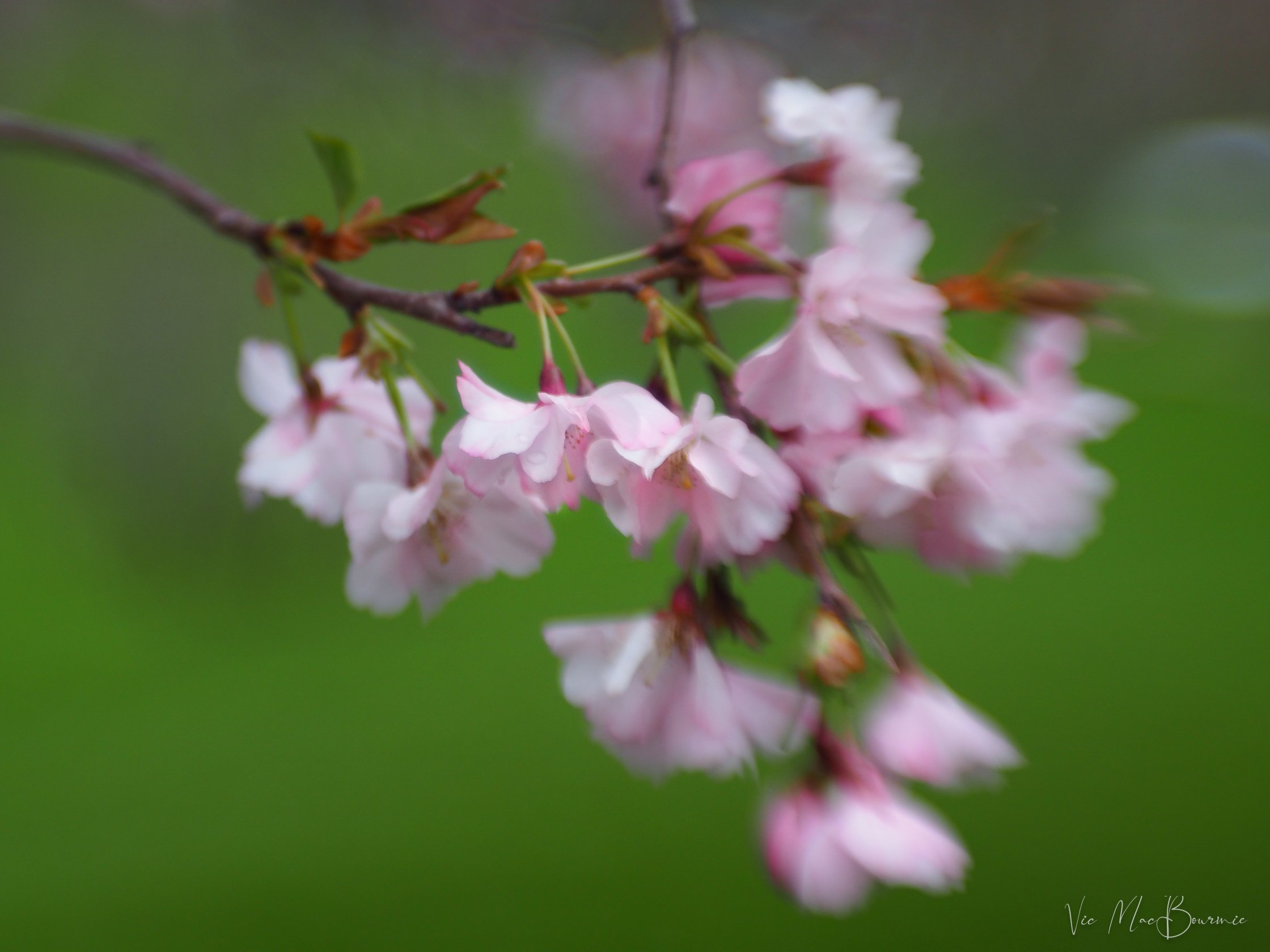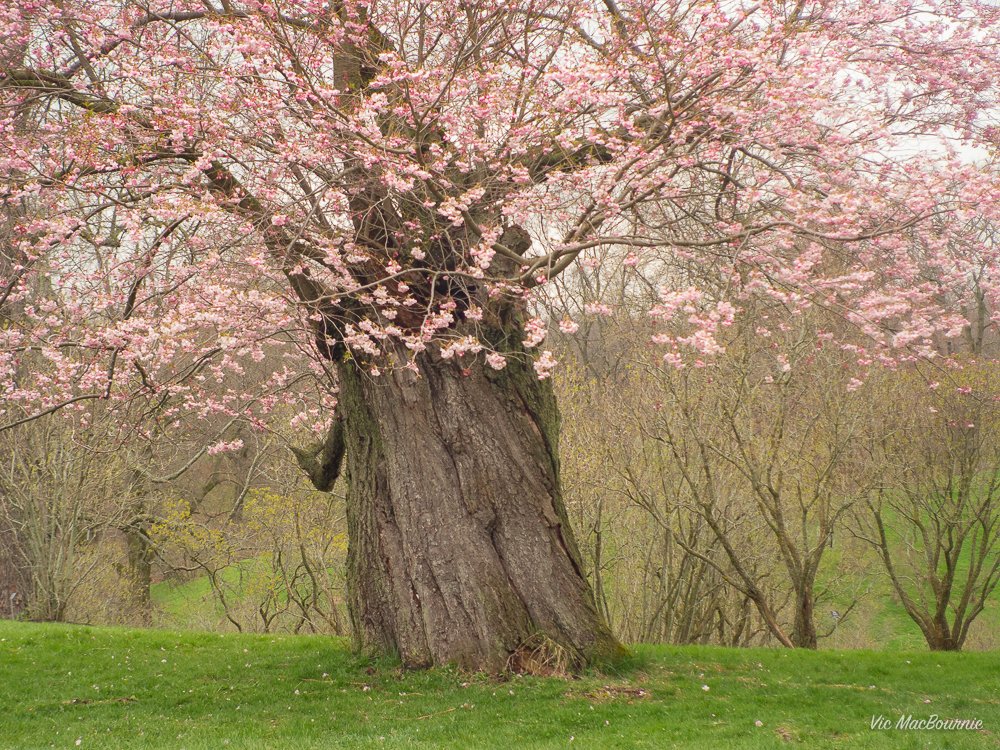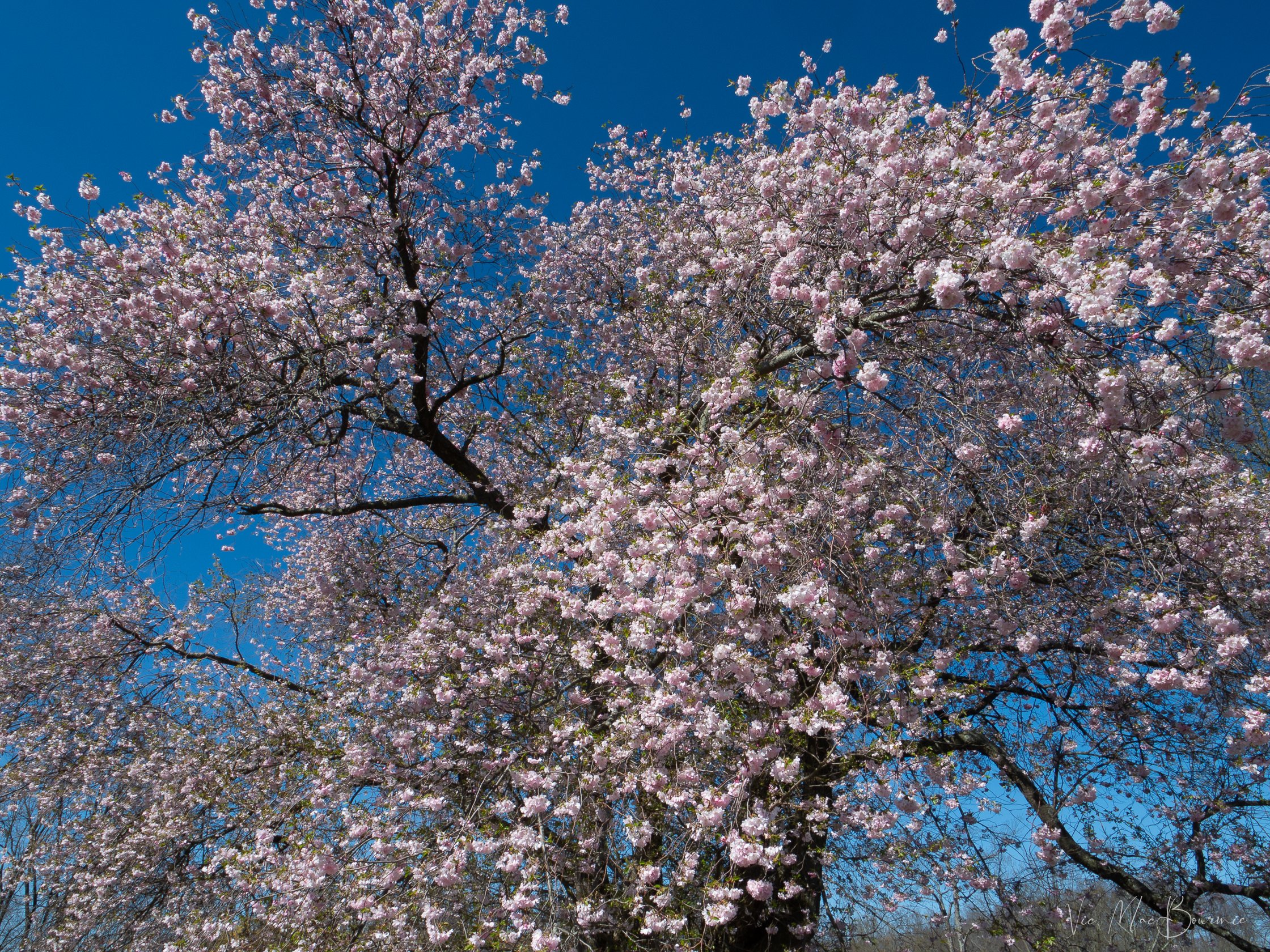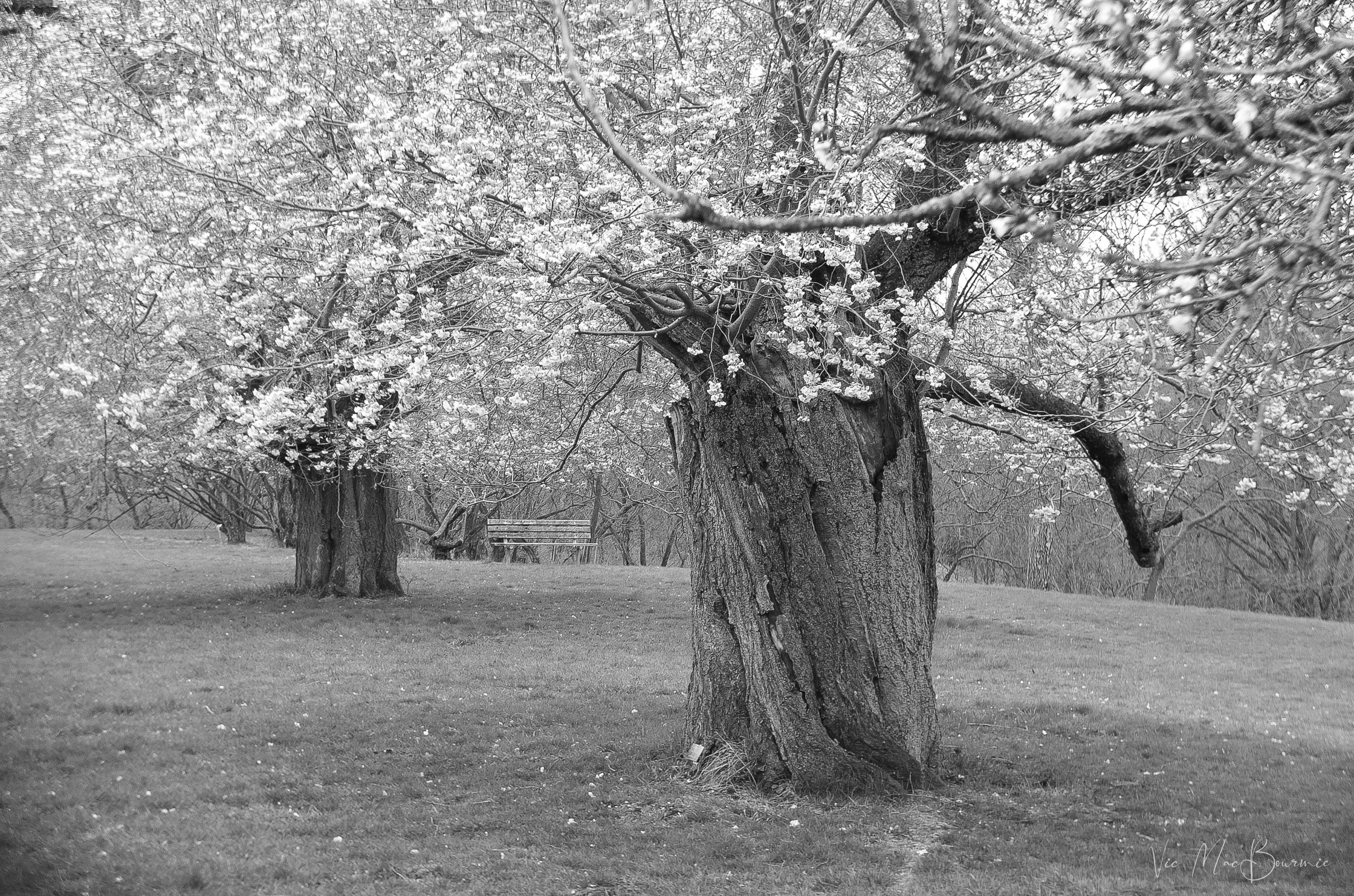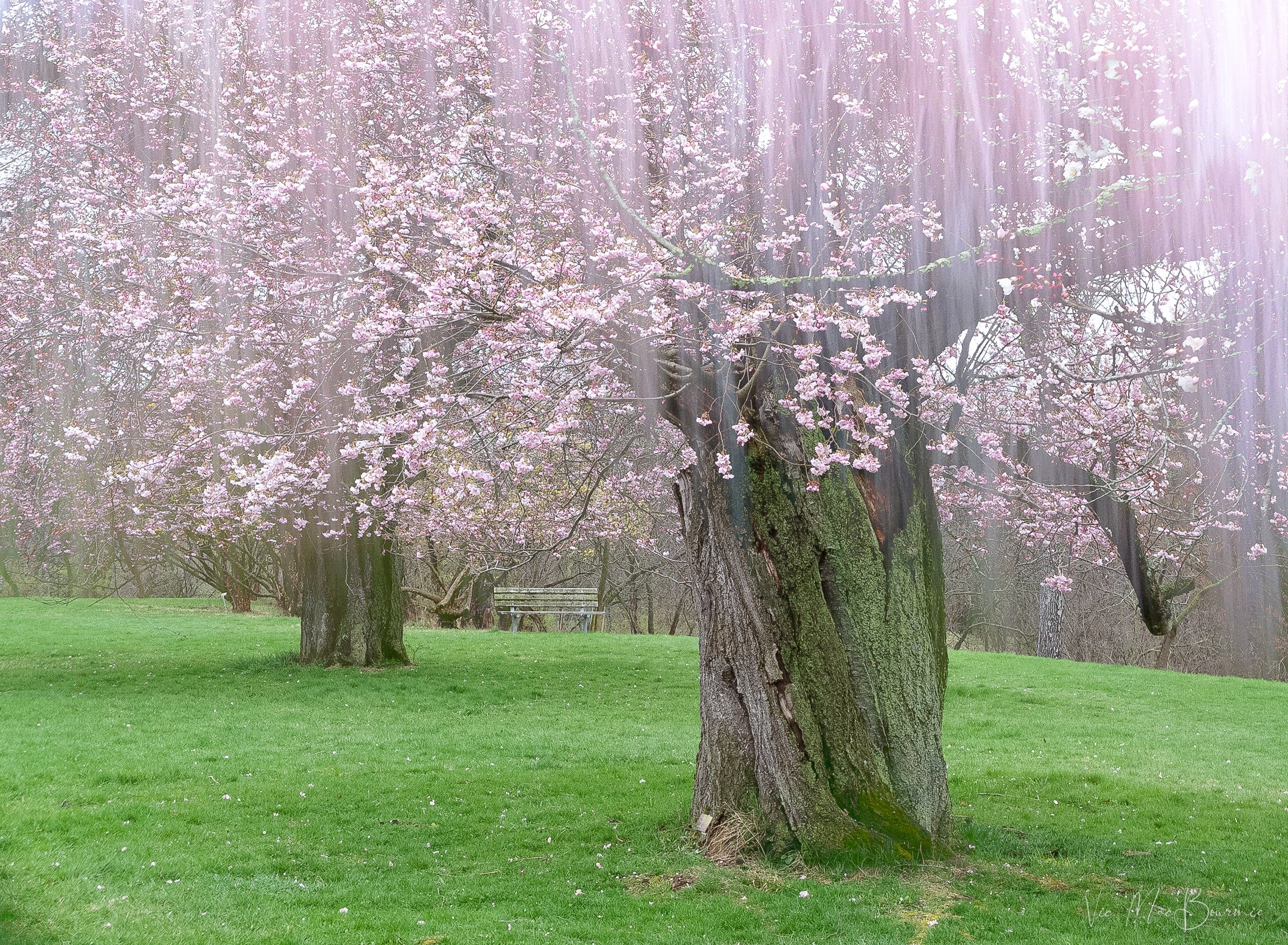The art of capturing Cherry trees in bloom
Five tips to photograph the essence of these beautiful trees
It’s early spring and the Cherry tree blossoms are emerging along with tourists looking to capture the ultimate selfie. I’m here in our local botanical garden with my tripod and a couple of cameras looking to document the cherry trees in all their beauty.
The early morning light is at its best and most of the “tourists” are still at home just getting out of bed. That’s a good time to begin shooting. Not only is the early morning light at most locations at its best, but this is the only possibility of capturing the trees alone in the landscape.
Tip one: Get out early to beat the tourists and capture the trees in their best light. Getting up early is always a good idea whether you are photographing the trees in your own garden or at a public garden. Light is the key here and soft morning light on these trees in bloom helps to capture the soft petals in a delicate light.
Also, since the flowers on the trees are white or pink, consider over exposing the image 1/3 of a stop to “hold the whites” and not end up with a muddy, underexposed images that fall short of what you are seeing. The camera is going to want to turn those lovely white/pink flowers middle grey. By overexposing the images slightly, the whites are kept clean. Use the over exposure button available on most modern cameras.
Cherry Tree bloom: A worldwide attraction worth capturing
The cherry tree blossom is a phenomenon that sweeps across the world as spring arrives creating a spectacle from Japan’s incredible displays to the National Cherry Blossom Festival in Washington where tourists and residents even turn to websites to help them find the ultimate location to capture a photograph.
Whether it’s Japan’s incredible sakura cherry blossom show, the Washington display, a local cherry tree festival or a beautiful tree blooming in your backyard, the secret to capturing these delicate blooms is a combination of an ideal scene and good timing.
For the blossoms, that time is during peak bloom, which is defined as when at least 70 per cent of the cherry trees have fully opened. This year, peak bloom for the Yoshino cherry trees in Washington hit around March 17. In Toronto, Canada, peak bloom was around the week of April 21-26th. In Japan the sakura bloom lasts from late March through May.
The best viewing of the cherry blossom trees typically lasts four to seven days after peak bloom begins.
Tip two: Try to get out a few times during peak bloom.
Capturing good images of the cherry trees in bloom is best achieved by visiting the trees several times during peak bloom. By making multiple visits to the cherry trees at different times of day, your opportunity to capture the potential of different scenes and changing light increases dramatically. It’s also an opportunity to explore different approaches from macro photography to a more journalistic approach of documenting the tourists.
Tip three: Be creative. Try to go beyond just documenting the trees in bloom.
It’s also a great opportunity to try different lenses, and cameras in an ideal environment. Pull out your cell phone to capture images that can instantly go on to social media, but use your cameras and specialty lenses to capture the more atistic and intimate images.
Experiment with different cameras and lenses when you have such a perfect subject. Here, I used a vintage lens 18mm 110 manual focus lens on my tiny Pentax Q to capture this image.
In the above image, I used a vintage lens meant for vintage 110 lenses on my tiny Pentax Q to capture the image. It’s not only fun, but again it provides you with an opportunity to give your lenses a real work out to create more unique images from different perspectives.
Use a macro lens to capture up-close images of the individual blooms at life size. Open the lens up to its maximum aperture and include out-of-focus cherry blooms in front of the lens while focussing on a more distant bloom to create a beautiful “selective focus” image.
On a recent visit to photograph cherry blossoms at our public gardens, I focussed on a more artistic approach using a 50mm Lensbaby on my Olympus micro 4/3rds system. By working with a Lensbaby lens, photographers can create interesting out-of-focus elements in their images.
Tip four: Look for special situations that add a surprising element to your images. While I was working with the Lensbaby, I noticed a native bee sitting on one of the blossoms. It created the perfect opportunity to add a natural element in a creative way.
Don’t wait for blue skies to get out with the camera. While blue skies can make for dramatic pictorial images, overcast days are ideal for capturing soft light. But don’t stop there. Rain can add further drama to the scene whether you are shooting close-up images or taking a more pictorial approach.
Tip five: Get right under the canopy of the tree and shoot up with a wide angle to capture the intricate branching of the tree. If there is a blue sky, consider using a polarizer to deepen the blue and show off the flowers. Lay on the ground and look up. Also, this is the ideal time to experiment with many of the built-in filters incorporated in many digital cameras. Try the soft focus filter for a delicate look. Although many photographers use them for portraits, they can work well with flower photography.
Black and white images might be something you want to experiment with while you are photographing the trees.
If you are looking up at a white sky, try shooting with the high-key filter to create a very light and airy image. In addition, consider shooting in black and white for dramatic results.
Try experimenting with ICM or intentional camera movement. This is a technique where the photographer uses a long exposure and moves the camera during the exposure. Results are varied, but interesting images with a creative flair are possible using ICM. In the photograph below, two images of the cherry tree were sandwiched together in photoshop to create a single image. The first image is the traditional one while the second is a very abstract image of the trees during significant camera movement. Included is a smaller photo showing the ICM image.
Finally, don’t be afraid to incorporate the cityscape in the background whenever possible to help give the image a sense of place. If you are shooting in Washington, be sure to include elements in the scene that gives readers an idea of where you photographed the image. Consider shooting a panorama of the scene or pull out your extreme wide angle for a unique feel.
In conclusion, take advantage of an ideal situation
Whether it’s a sea of cherry trees blooming in a public garden, or a single tree in your own garden, consider it an opportunity to go to town. Focus on capturing that iconic image but don’t be afraid to stretch your creative vision to the max. Bring out your widest lens, a fisheye or extreme wide angle. Pull out a macro lens, use built-in filters or add them to the front of your lens.
Find unique angles… shoot the scene like a photojournalist would and include people in the scene. Look up, look down. Return to the scene at different times of the day, during bright sunny days, overcast days and even rainy days.
Use the opportunity as a learning experience and most of all have fun.
Author Profile: Vic MacBournie is a former journalist and author/owner of the award-winning website and newsletter Ferns & Feathers. He writes about his woodland wildlife garden that he has created over the past 25 years and enjoys sharing his garden photography with readers.

